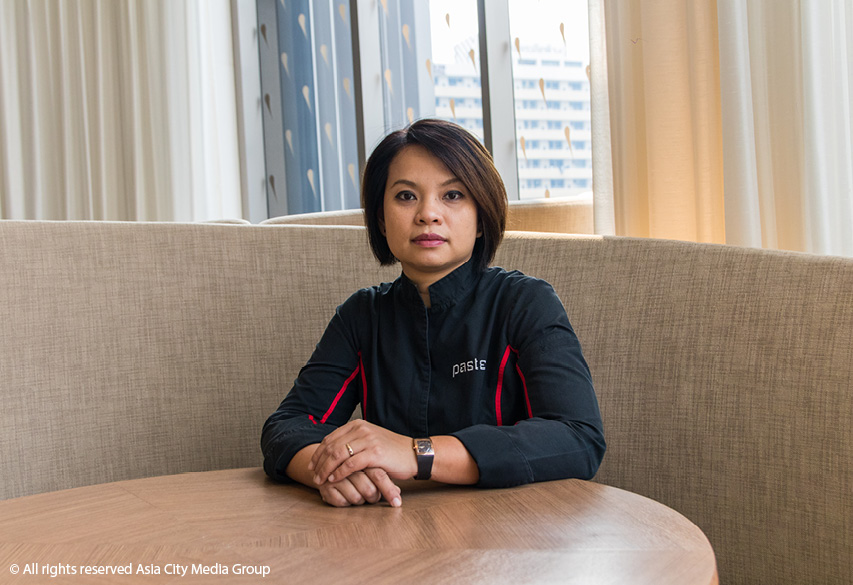Chef Bongkoch ”Bee” Satongun, 41, has been named Asia’s Best Female Chef 2018 as part of the Asia’s 50 Best Restaurants awards. It comes mere months after Paste, chef Bee’s Thai fine-dining restaurant with chef-husband Jason Bailey, was awarded a Michelin star. Known for imbuing traditional Thai cuisine with creativity and personality, Bee creates dishes that are refreshingly unique to locals and foreigners alike. We spoke to her about what it means to be Asia’s best female chef and what the future of Thai cuisine looks like.
Where did you develop your cooking skills?
I started cooking with my mom when I was a little kid. I had to help her for our family’s survival. Then I worked in an office in the F&B industry. When I was 28, I met my partner, Jason, and he trained me to work in a professional kitchen.
What’s it like to be a woman in the F&B industry?
In today’s world, both men and women can do the same job, but in the olden days, all the chefs were female. If you wanted to cook in the palace, you had to be a woman.
Is Paste your first restaurant?
Before Paste, Jason and I opened a restaurant together in Australia called Classical Thai Cravings. It was awarded Best Thai Restaurant by Restaurant and Catering Australia. After that we decided to move here and open Paste.
How has the food at Paste developed since 2013?
We have gone deeper into traditional Thai cuisine, using rare Thai herbs and ingredients. Each ingredient has its own uniqueness and character. For example, we use salt from Nan province because it’s smoother than sea salt. Our fish sauce is from river fish instead of sea fish.
What inspires your dishes?
All the old Thai cookbooks from King Rama V up until King Rama VII [roughly 1870-1930], when Thai food was at its peak. It was like a sport for women. When I first started, I didn’t think that Thai food would be this in-depth. It stopped around the King Rama VII era, when Thailand became a democracy and women started going out to work and had less time for cooking.
How do you connect old Thai recipes with modern techniques?
We study deep into the dish, the history of the dish or what its purpose was. Chanthaburi province uses raw durian in their food, and we developed a technique based on that. But it won’t work to bring all the old recipes back because people nowadays have different palates. We have tasted so many other cuisines. Thai cuisine is also more concerned with the sauce, while the meat doesn’t get enough attention. So we use the modern techniques, like sous vide, with our meat.
What is your favorite Thai dish?
Khao kluk kapi [shrimp paste rice with a set of sides] because every little side and ingredient is equally important.
What are your favorite Thai restaurants in Bangkok?
I normally eat at the old restaurants, like Klang Soi Restaurant in Sukhumvit Soi 49. It’s like eating your grandmother’s food. They also have a few traditional Thai dishes like khanom jeen sao nam [fermented rice noodles with pineapple, coconut milk, ginger and fish balls] and jang ron [old-style fish dumplings].
What do you hope to see for the future of Thai cuisine?
I feel that more and more Thai chefs, as well as Western chefs, want to cook Thai food. Because of that passion, Thai cuisine is growing.
Any advice for aspiring chefs?
When you modernize traditional cuisine, try to study it deeply. Now, people just look at the surface, and when you do that, the cuisine loses its soul.
What’s next for you?
We have to try to keep our consistency. After the award, people will come in with more expectations.
Looking back, what have you learned from being a chef?
When we first opened in Sukhumvit Soi 49, we were empty for almost three months. We would turn on some music and still nobody would come, but we just kept going. So, just keep going.
